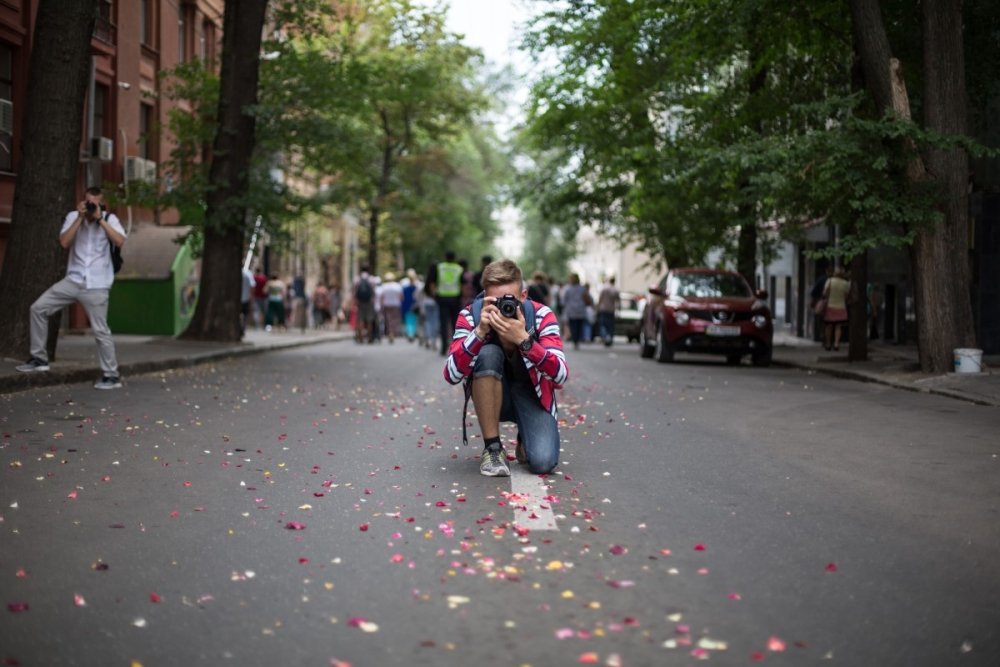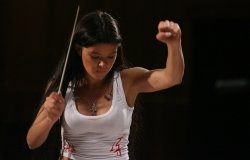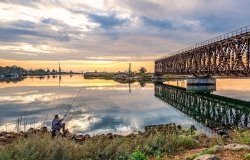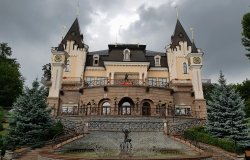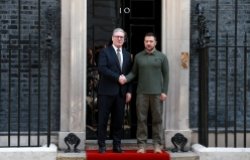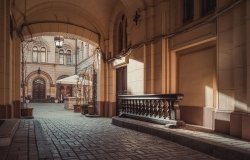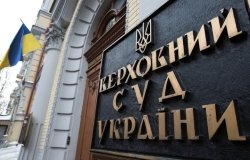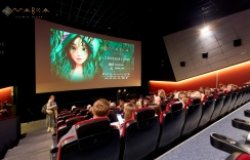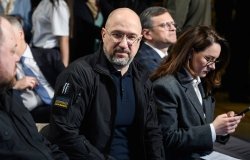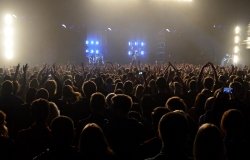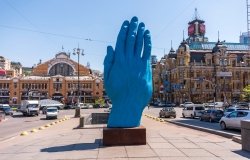
A blog of the Kennan Institute
Kharkiv’s Resilient Photography Tradition
The theme of resilience has become a leitmotif running through the Ukrainian artistic response to the 2022 Russian invasion, together with that of resistance. A recent photo exhibition in Belgium emphasizes the fact that such strength and defiance are nothing new. As Kateryna Radchenko and the other curators of the notable Generations of Resilience exhibit at Brussels’s Hangar Photo Art Center tell their viewers, “Generation after generation, Ukrainian artists have fought for their freedom of expression.”
Part of the eighth PhotoBrussels Festival, the exhibit covers three floors. The second floor presents contemporary photography, including, but not limited to, photographers from Kharkiv. The third floor is given over to young photographers and video artists from around Ukraine, including teenagers. The ground floor is dedicated to the Kharkiv School, three generations of photographers from Kharkiv where a resilient group of shutterbugs began challenging Soviet censorship in the 1960s.
The group has continued to nurture a community of like-minded artists, demonstrating a steadiness in sensibility across political transformations, even though, as the exhibition notes, the Kharkiv School “is neither an official school nor an organization.” Created in the years following the “Khrushchev Thaw” of the late 1950s and early 1960s, the group remained an underground movement of nonconformist photographers working in and around Ukraine’s second-largest city.
Collectively, they led a local artistic revival as they became known for experimental techniques. They advanced a shared approach drawing on shocking techniques to make powerful statements about the imperfections of Soviet reality. They proudly advanced the notion of “bad photography” as one of their signatures.
In 1971, this informal community created the Vremia Group, led by Yuri Rupin and Evheny Pavlov, within the Kharkiv Regional Photo Club. Borys Mykhailov and Oleksandr Suprun, whose works are included in the exhibition, are perhaps the best known among the founding members. The informal alliance joined the more official Kharkiv Regional Photo Club in 1975, only to be shut down months later by authorities concerned about their artistic radicalism.
The group nonetheless continued to function informally, growing to embrace dozens of Kharkiv photographers looking to escape Soviet artistic control. By the 1980s, a rising generation of photographers known as the Gosprom Group, for its exhibits at factory palaces of culture, focused on documentary and candid photos of Soviet life. Their exhibitions recovering the history of the Holodomor were particularly audacious at a time when Soviet authorities denied that the great famine of the 1930s had occurred. Roman Pyatkova, perhaps the best known of his generation internationally, was joined by a dozen leading photographers in advancing a distinctive Kharkiv photographic aesthetic.
The third wave of Kharkiv photographers formed the Shilo Group to carry this distinctive approach to photography into the 21st century. Their works examined the more mundane social realities of independence, turning to more dramatic wartime themes with the initial Russian invasion of 2014, and intensifying war coverage following Russia’s full-scale 2022 invasion. The Hangar exhibit tracks their transformation into war correspondents recording the destruction of their hometowns and the consequences of occupation.
By devoting a section of the show to the Kharkiv School, the Hangar gallery offers international recognition to this longstanding Kharkiv artistic vision in photography. Rodolphe de Spoelberch founded Hangar as a private Belgian art center dedicated to photography in 2014. Housed in the factory that produced the Pipe sports car at the turn of the 20th century, the gallery’s home served as the College of Art and Design in the 1970s before becoming the Sinergon Night Club during the 1980s. From its earliest days, Hangar has supported all forms of contemporary photography, averaging five solo or group shows per year plus its annual PhotoBrussels Festival, which has become a major event on the city’s artistic calendar.
The curators’ notes for this exhibition tell viewers that “the artists somehow internalize a collectively experienced event—the state of war—and formally account for it. The intellectual and oppositional underground of the last century has transformed into a lived, domestic underground.” Witnesses of their times, the Kharkiv photographers have continued to illuminate the darkest of times right until today.
The opinions expressed in this article are those solely of the author and do not reflect the views of the Kennan Institute.
See our newest content first.
Subscribe to receive the latest analysis from Focus Ukraine
About the Author

Blair A. Ruble
Former Wilson Center Vice President for Programs (2014-2017); Director of the Comparative Urban Studies Program/Urban Sustainability Laboratory (1992-2017); Director of the Kennan Institute for Advanced Russian Studies (1989-2012) and Director of the Program on Global Sustainability and Resilience (2012-2014)

Kennan Institute
The Kennan Institute is the premier US center for advanced research on Eurasia and the oldest and largest regional program at the Woodrow Wilson International Center for Scholars. The Kennan Institute is committed to improving American understanding of Russia, Ukraine, Central Asia, the South Caucasus, and the surrounding region though research and exchange. Read more


